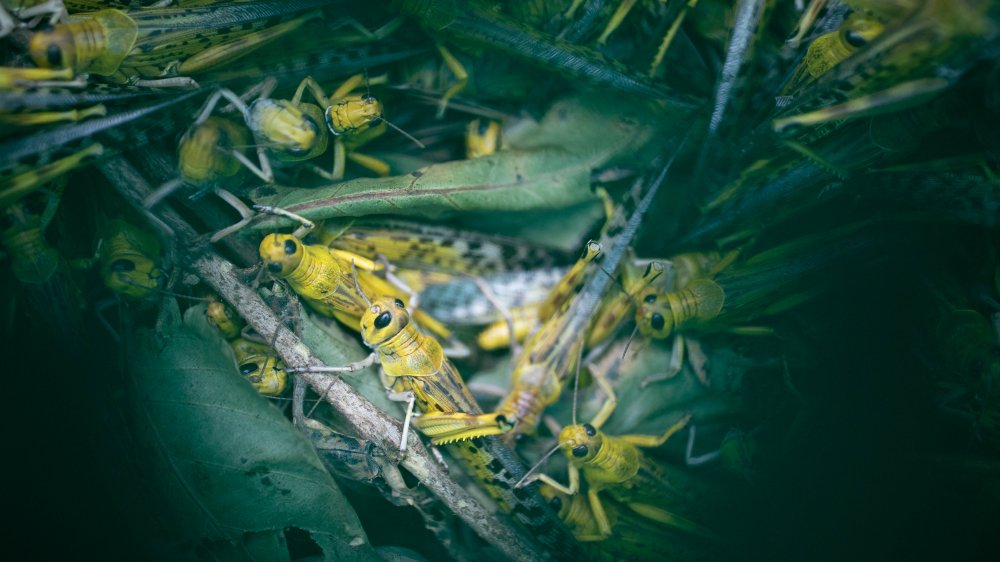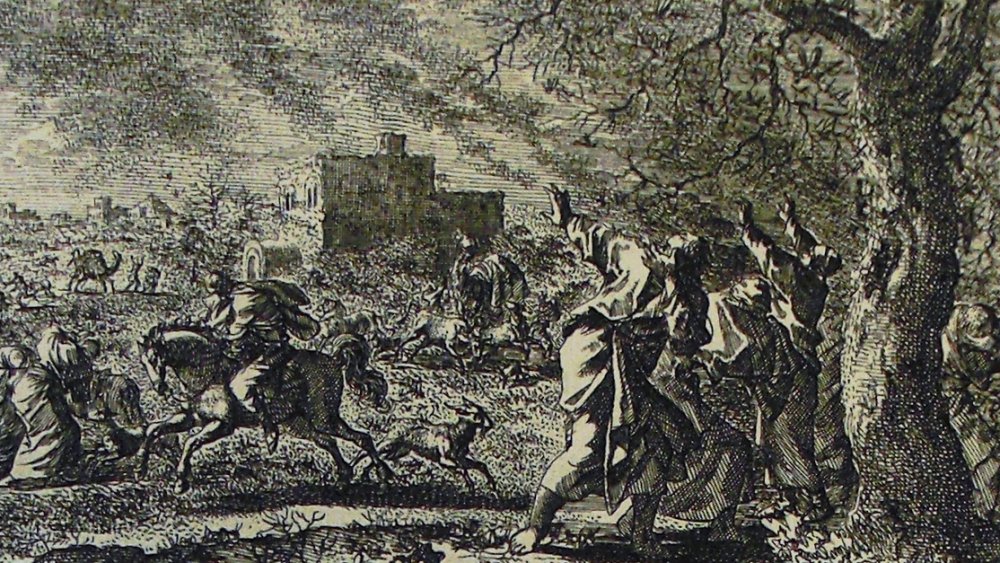This Could Be The Cause Of The Biblical Plague Of Locusts
The Nile River turns to blood. Boils coat the bodies of the Pharaoh, his servants, and his animals. Hail shatters the landscape and destroys the crops of Egypt. And before darkness covers the land, and God claims the lives of all the firstborn, except those who coat the lintel of their doors with the blood of lambs ... a plague of locusts swarms over Egypt, and swallows up every last green thing.
No, this isn't the world's worst bedtime story, or an optimistic prediction for the remainder of 2020. This is how the Hebrew God, through Moses, freed the ancient Hebrews from slavery, as described in the Book of Exodus and recounted by the British Library. This set of events, known as the Ten Plagues of Egypt, is central to the reason that contemporary Jewish families celebrate Passover. The account of these events represents the freedom of a group of people from the oppression of tyrannical power.
The literal truth of this particular, thousand-years-old tale may not be relevant — there's no way to verify whether, for example, a river can appear to turn into blood (although, as explained by Live Science, red algae bloom may have been the cause). In 2020, though, a real-life swarm of locusts has ravaged areas of Africa, the Middle East, and India, as described by Business Insider. It has caused some to speculate, much like Y2K, about the impending doomsday, especially with COVID-19 still going strong.
A plague of actual Biblical proportions
So what could cause migratory locust swarms, thick as black clouds, to swarm across the sky and devour crops such as wheat, rice, corn, millet, barley, oats, sugarcane and sorghum, destroy livelihoods, leave five million without food, and farmers helpless to do anything but watch? Over 450 billion — yes, billion — locusts have been killed, to help preserve the regions, but it's a mere dent in their numbers.
The answer is pheromones. Yes, that same chemical stuff that supposedly plays a role in causing people to feel inexplicably attracted to one another. In this case, though, it's a completely different kind of experience, albeit with the same attractive powers. According to Gizmodo, one locust, or a few, are relatively benign. But once four or five of them congregate together, the more of a chemical called 4VA is emitted, which draws even more locusts together, regardless or sex or age. Sensory cells in the locusts' antennae, called basiconic sensilla, pick up on the chemical, and draw them to the larger group of locusts. Once enough of them get together, they constitute a "swarm," and a swarm can devour the same amount that 35,000 people would eat per day. The fact that they eat human crops, of course, doesn't help.
Scientists have tried snaring locusts with sticky traps baited with synthetic 4VA, while others are developing more direct methods of straight-up killing locusts who have not yet started swarming, according to Reuters, "subject to biosecurity evaluation."

